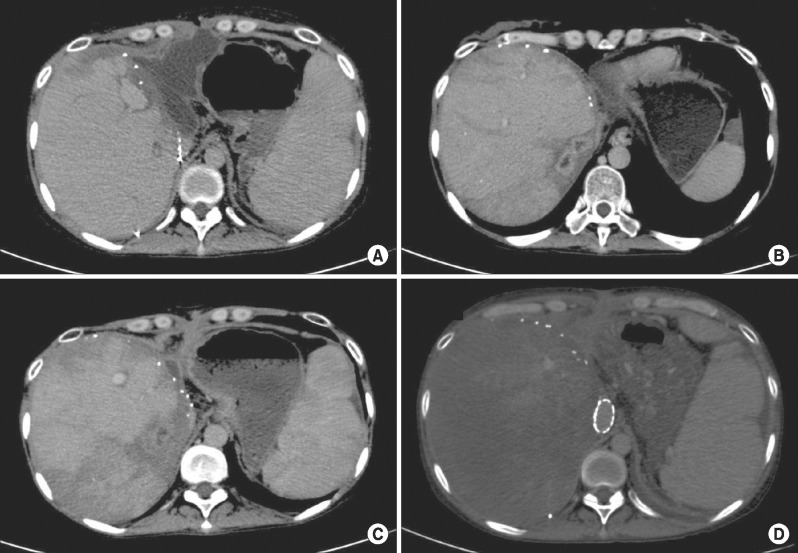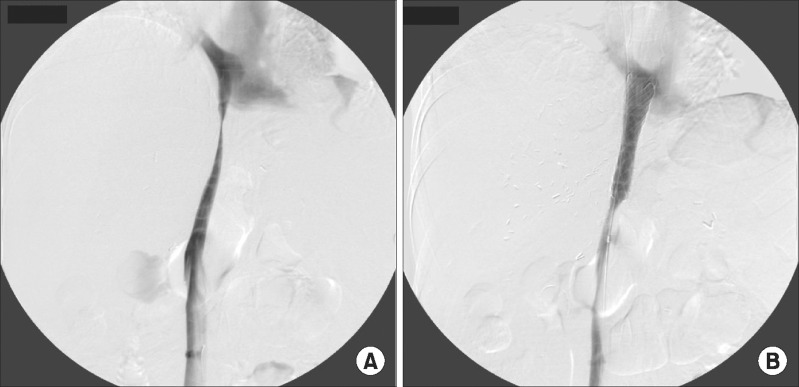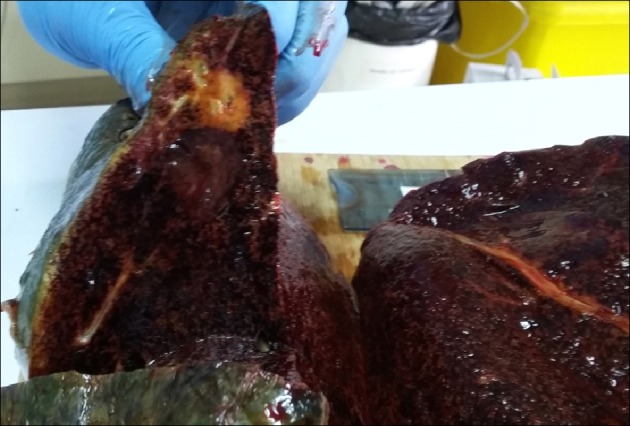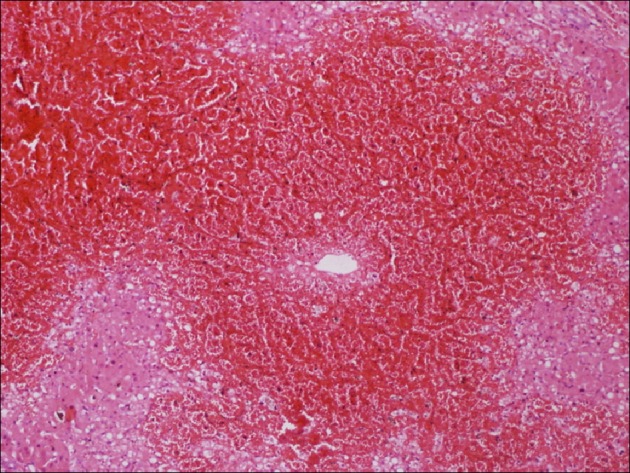1. Bras G, Jelliffe DB, Stuart KL. Veno-occlusive disease of liver with nonportal type of cirrhosis, occurring in Jamaica. AMA Arch Pathol. 1954; 57:285–300. PMID:
13147641.
2. Takamura H, Nakanuma S, Hayashi H, Tajima H, Kakinoki K, Kitahara M, et al. Severe veno-occlusive disease/sinusoidal obstruction syndrome after deceased-donor and living-donor liver transplantation. Transplant Proc. 2014; 46:3523–3535. PMID:
25498084.

3. Dulley FL, Kanfer EJ, Appelbaum FR, Amos D, Hill RS, Buckner CD, et al. Venocclusive disease of the liver after chemoradiotherapy and autologous bone marrow transplantation. Transplantation. 1987; 43:870–873. PMID:
3296355.
4. Kumar S, DeLeve LD, Kamath PS, Tefferi A. Hepatic veno-occlusive disease (sinusoidal obstruction syndrome) after hematopoietic stem cell transplantation. Mayo Clin Proc. 2003; 78:589–598. PMID:
12744547.

5. Carreras E. Veno-occlusive disease of the liver after hemopoietic cell transplantation. Eur J Haematol. 2000; 64:281–291. PMID:
10863974.

6. Marín-Gómez LM, Álamo-Martínez JM, Suárez-Artacho G, Ramírez-Santos J, Bernal-Bellido C, Barrera-Pulido L, et al. Is the sinusoidal obstructive syndrome post-liver transplantation a pathologic entity with a multifactorial etiology? Rev Esp Enferm Dig. 2015; 107:235–238. PMID:
25824926.
7. Dignan FL, Wynn RF, Hadzic N, Karani J, Quaglia A, Pagliuca A, et al. BCSH/BSBMT guideline: diagnosis and management of veno-occlusive disease (sinusoidal obstruction syndrome) following haematopoietic stem cell transplantation. Br J Haematol. 2013; 163:444–457. PMID:
24102514.

8. Tsirigotis PD, Resnick IB, Avni B, Grisariu S, Stepensky P, Or R, et al. Incidence and risk factors for moderate-to-severe veno-occlusive disease of the liver after allogeneic stem cell transplantation using a reduced intensity conditioning regimen. Bone Marrow Transplant. 2014; 49:1389–1392. PMID:
25068424.

9. Shen T, Feng XW, Geng L, Zheng SS. Reversible sinusoidal obstruction syndrome associated with tacrolimus following liver transplantation. World J Gastroenterol. 2015; 21:6422–6426. PMID:
26034381.

10. Rubbia-Brandt L. Sinusoidal obstruction syndrome. Clin Liver Dis. 2010; 14:651–668. PMID:
21055688.

11. Sebagh M, Debette M, Samuel D, Emile JF, Falissard B, Cailliez V, et al. "Silent" presentation of veno-occlusive disease after liver transplantation as part of the process of cellular rejection with endothelial predilection. Hepatology. 1999; 30:1144–1150. PMID:
10534334.

12. Sebagh M, Azoulay D, Roche B, Hoti E, Karam V, Teicher E, et al. Significance of isolated hepatic veno-occlusive disease/sinusoidal obstruction syndrome after liver transplantation. Liver Transpl. 2011; 17:798–808. PMID:
21351239.

13. Deleve LD. Dacarbazine toxicity in murine liver cells: a model of hepatic endothelial injury and glutathione defense. J Pharmacol Exp Ther. 1994; 268:1261–1270. PMID:
8138939.
14. DeLeve LD, Wang X, Kuhlenkamp JF, Kaplowitz N. Toxicity of azathioprine and monocrotaline in murine sinusoidal endothelial cells and hepatocytes: the role of glutathione and relevance to hepatic venoocclusive disease. Hepatology. 1996; 23:589–599. PMID:
8617441.

15. DeLeve LD. Glutathione defense in non-parenchymal cells. Semin Liver Dis. 1998; 18:403–413. PMID:
9875557.

16. Daly AS, Hasegawa WS, Lipton JH, Messner HA, Kiss TL. Transplantation-associated thrombotic microangiopathy is associated with transplantation from unrelated donors, acute graft-versus-host disease and venoocclusive disease of the liver. Transfus Apher Sci. 2002; 27:3–12. PMID:
12201469.

17. DeLeve LD, McCuskey RS, Wang X, Hu L, McCuskey MK, Epstein RB, et al. Characterization of a reproducible rat model of hepatic veno-occlusive disease. Hepatology. 1999; 29:1779–1791. PMID:
10347121.

18. Nakazawa Y, Chisuwa H, Mita A, Ikegami T, Hashikura Y, Terada M, et al. Life-threatening veno-occlusive disease after living-related liver transplantation. Transplantation. 2003; 75:727–730. PMID:
12640317.






 PDF
PDF ePub
ePub Citation
Citation Print
Print





 XML Download
XML Download